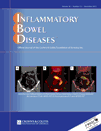Population-based case-control study of measles, mumps, and rubella and inflammatory bowel disease
Abstract
Background: Previous controversy was generated over the hypothesis that a paramyxovirus such as measles or vaccination against such viruses might be causally associated with inflammatory bowel disease (IBD). We aimed to determine if Crohn's disease (CD) or ulcerative colitis (UC) subjects are more likely to be seropositive for measles, mumps, or rubella than controls.
Methods: Using our population-based University of Manitoba IBD Research Registry we recruited CD (n = 235) and UC (n = 137) subjects ages 18–50 years for a study involving detailed questionnaires and venipuncture. We accessed the population-based databases of Manitoba Health (single provincial health insurer) to get age-, gender-, and geography-matched non-IBD controls (n = 310). We used a standard enzyme-linked immunosorbent assay (ELISA) to measure serum antibodies.
Results: Seropositivity for measles and mumps was similar in controls (98.1%, 78.4%, respectively) as in CD (96.2%, 72.3% respectively) and in UC (95.5%, 74.6%, respectively). However, controls were significantly more likely to be seropositive for rubella (98.1%) than were CD cases (91.0%, P < 0.0002) or UC cases (93.3%, P = 0.01). Males accounted for the significantly lower rates of seropositivity to rubella with CD. While we determined that significantly more controls than CD were vaccinated, we cannot be sure if the increased rate of rubella seropositivity in controls is secondary to wildtype or vaccine-associated infection.
Conclusions: These data suggest there is no association of having acquired measles, mumps, or rubella (by natural infection or through vaccination) and CD or UC. If anything, these data may suggest some protective effect of having acquired rubella infection or vaccine against acquiring CD.
(Inflamm Bowel Dis 2007)




